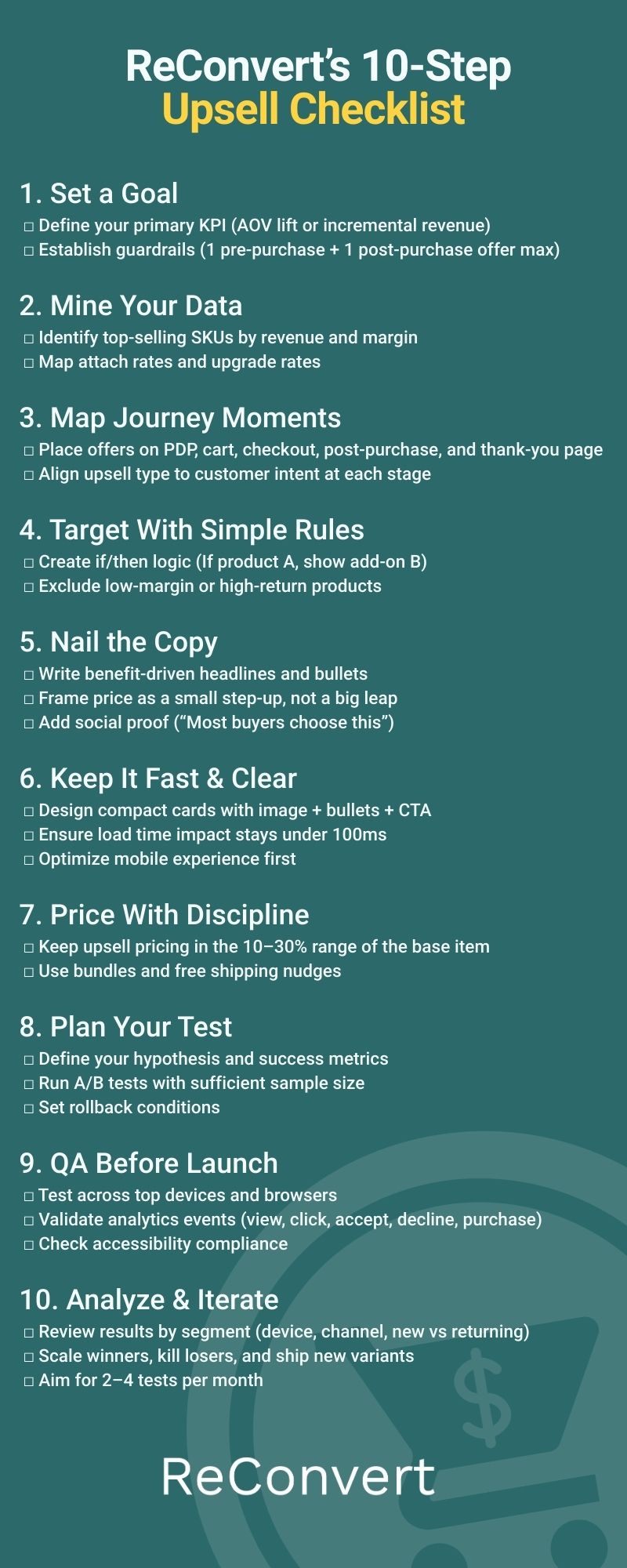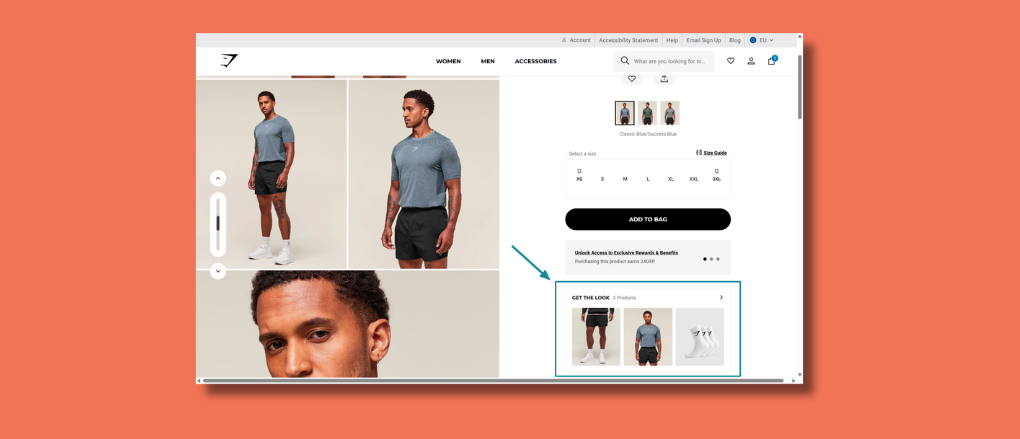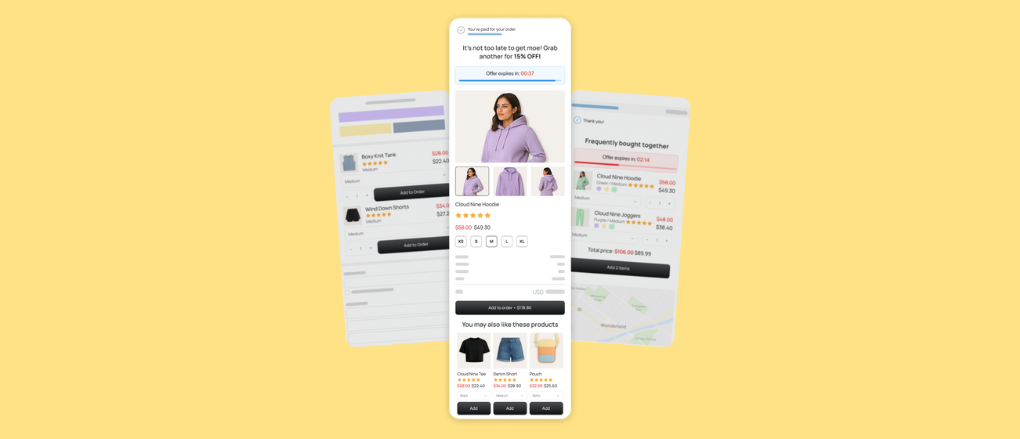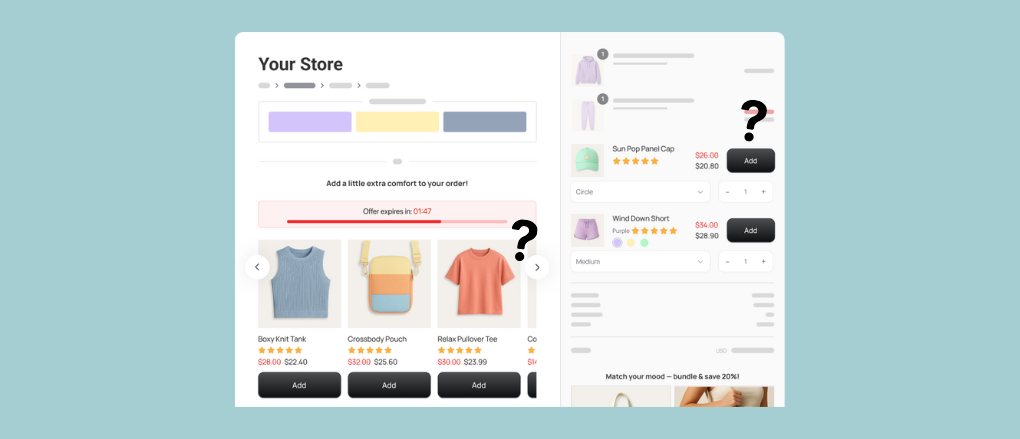eCommerce Upselling: How to Lift Your AOV With Simple Upsells (+ Free Checklist)
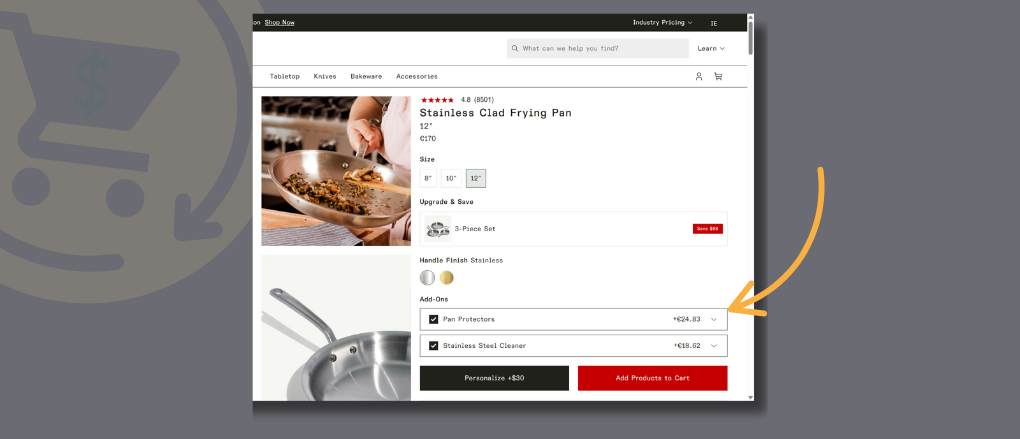
eCommerce upselling is one of the most powerful levers for increasing revenue, yet most brands barely scratch the surface.
Research shows upsells and cross-sells can drive 10–30% of total sales for top-performing online stores.
Still, many merchants focus all their energy on chasing new customers instead of maximizing the value of the ones they already have.
Here’s the reality: acquiring a new customer can cost up to 5x more than selling to an existing one.
Upselling flips that equation. With the right offer, you can lift average order value (AOV), boost retention, and grow profitability without spending an extra dollar on ads.
In this post, you’ll discover:
- What eCommerce upselling really means and why it matters
- Real-world upsell examples that drive measurable revenue
- A practical framework for building offers that convert
- Tools and best practices to scale your upsell strategy
- A free 10-step checklist to optimize your eCommerce upsell strategy
By the end, you’ll know exactly how to turn each transaction into a growth opportunity - and why upselling is the cornerstone of sustainable eCommerce.
What is eCommerce Upselling? (Definition + Benefits)
At its core, eCommerce upselling is the practice of encouraging customers to buy a higher-value version of a product or add complementary items to their order.
Think of it as guiding shoppers toward the “better” option - not pushing, but presenting more value at the right moment.
Why does it work so well? Because the customer is already in buying mode.
They’ve committed to a purchase, their credit card is out, and their intent is high. That’s when a simple, relevant offer feels natural instead of pushy.
What’s the Difference Between Upselling and Cross-Selling?
In eCommerce, upselling usually means encouraging customers to upgrade - for example, buying the premium version of a product.
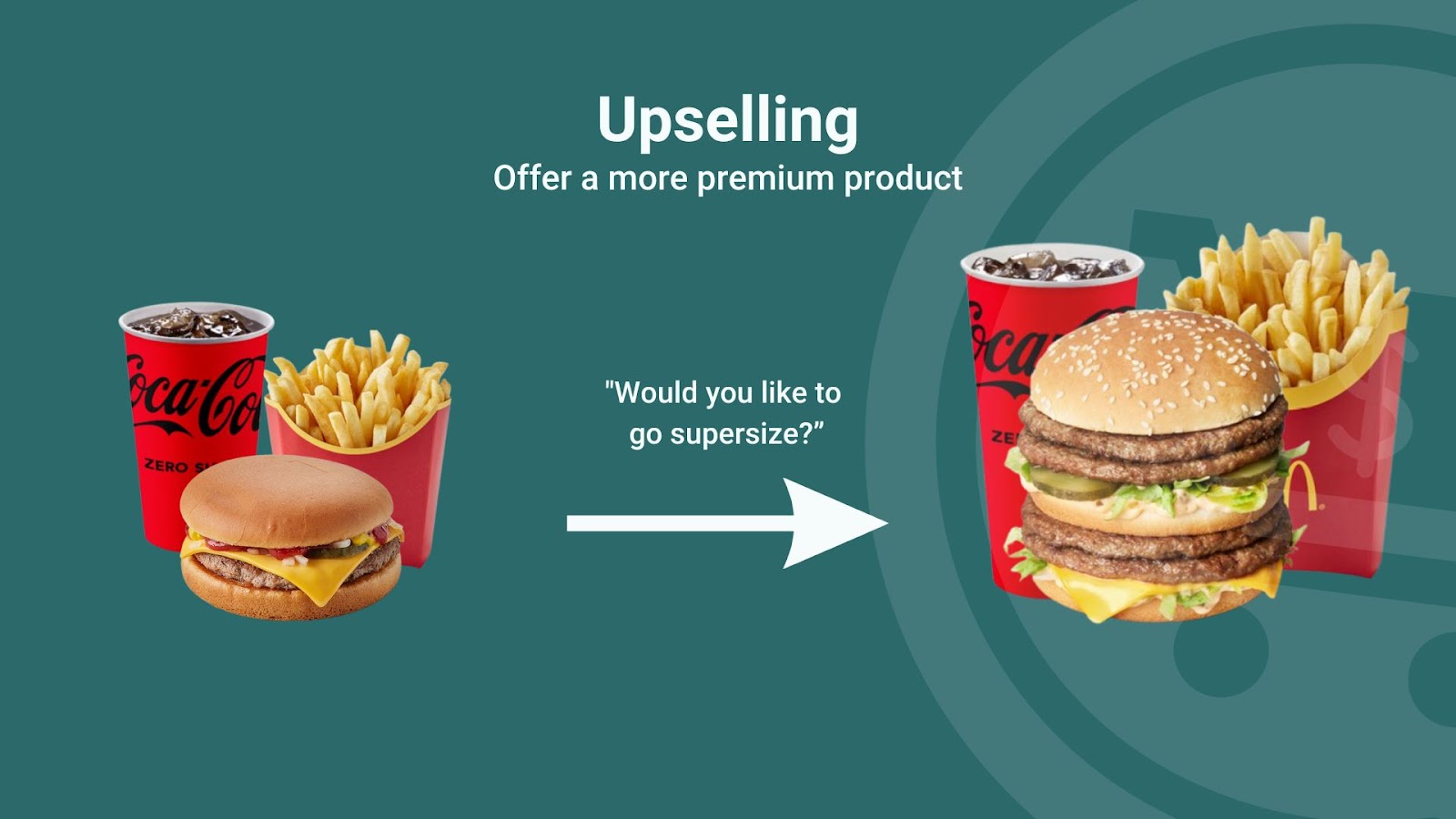
Cross-selling, on the other hand, means suggesting related or complementary products, like adding a cleaning kit when buying cookware.
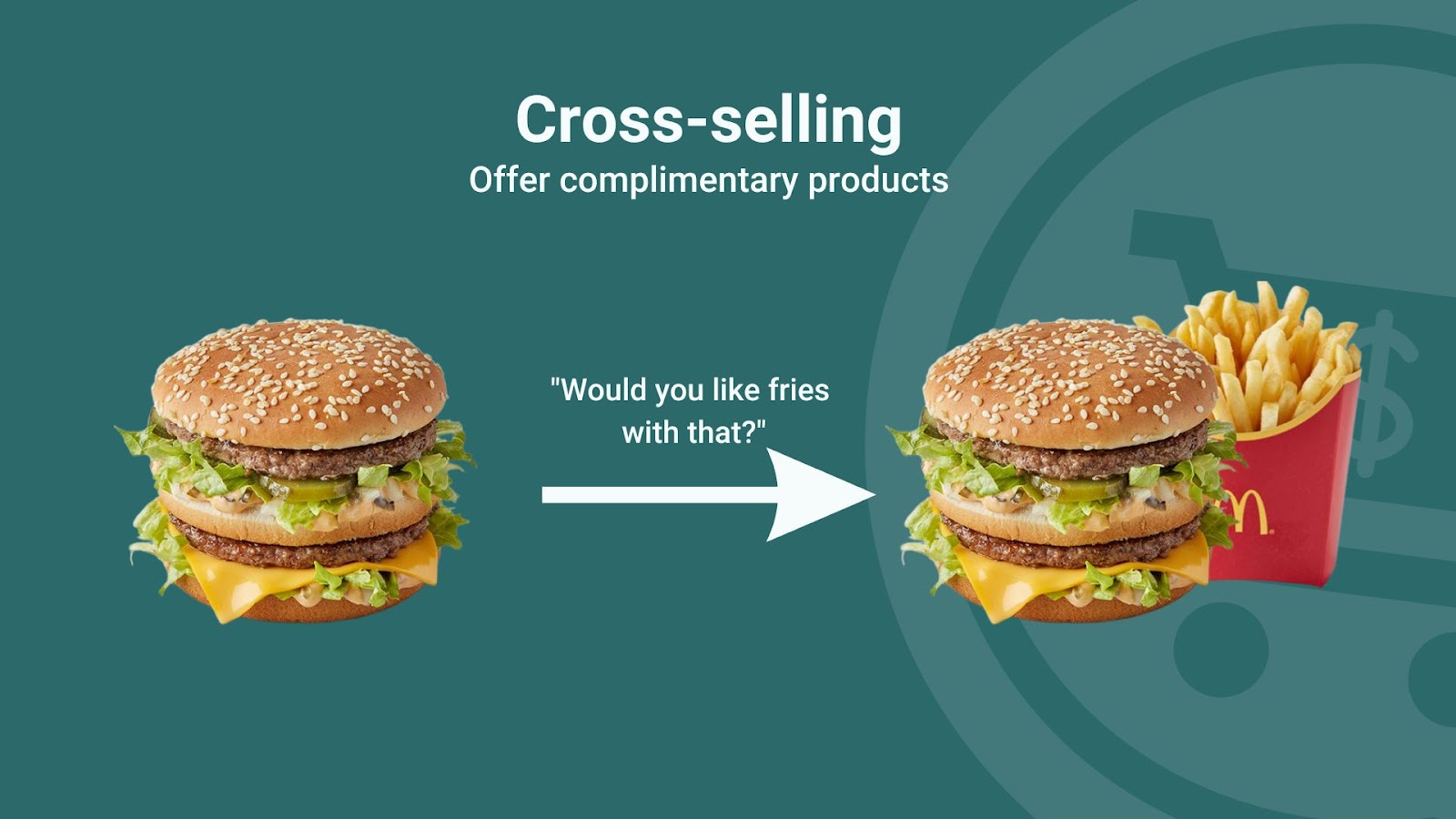
In practice, the two are often used interchangeably because both strategies share the same goal: increasing average order value while improving the customer experience.
Whether it’s a bigger, better version of what they came for, or something that enhances it, the key is relevance.
Key Benefits of eCommerce Upselling
The benefits of upselling are multifaceted. With the right upselling strategy, you can expect:
- Higher Average Order Value (AOV): Every successful upsell boosts revenue without new traffic.
- Stronger Customer Retention: Relevant recommendations feel personalized, building trust.
- Better Profit Margins: Selling more to existing customers is cheaper than acquiring new ones.
- Improved Shopping Experience: Customers discover products they might have missed.
Unlike discounting, which cuts into your bottom line, upselling increases value without eroding brand perception.
Done right, it feels less like a sales tactic and more like great customer service.
eCommerce Upselling in Action: ProFlower’s 3 Simple Upsells
ProFlowers is a great example of how small, well-placed upsells can add up to big revenue. Instead of overwhelming customers, they use three simple upsell tactics that feel natural within the buying journey.
1. Product Page Upgrade (+$9)
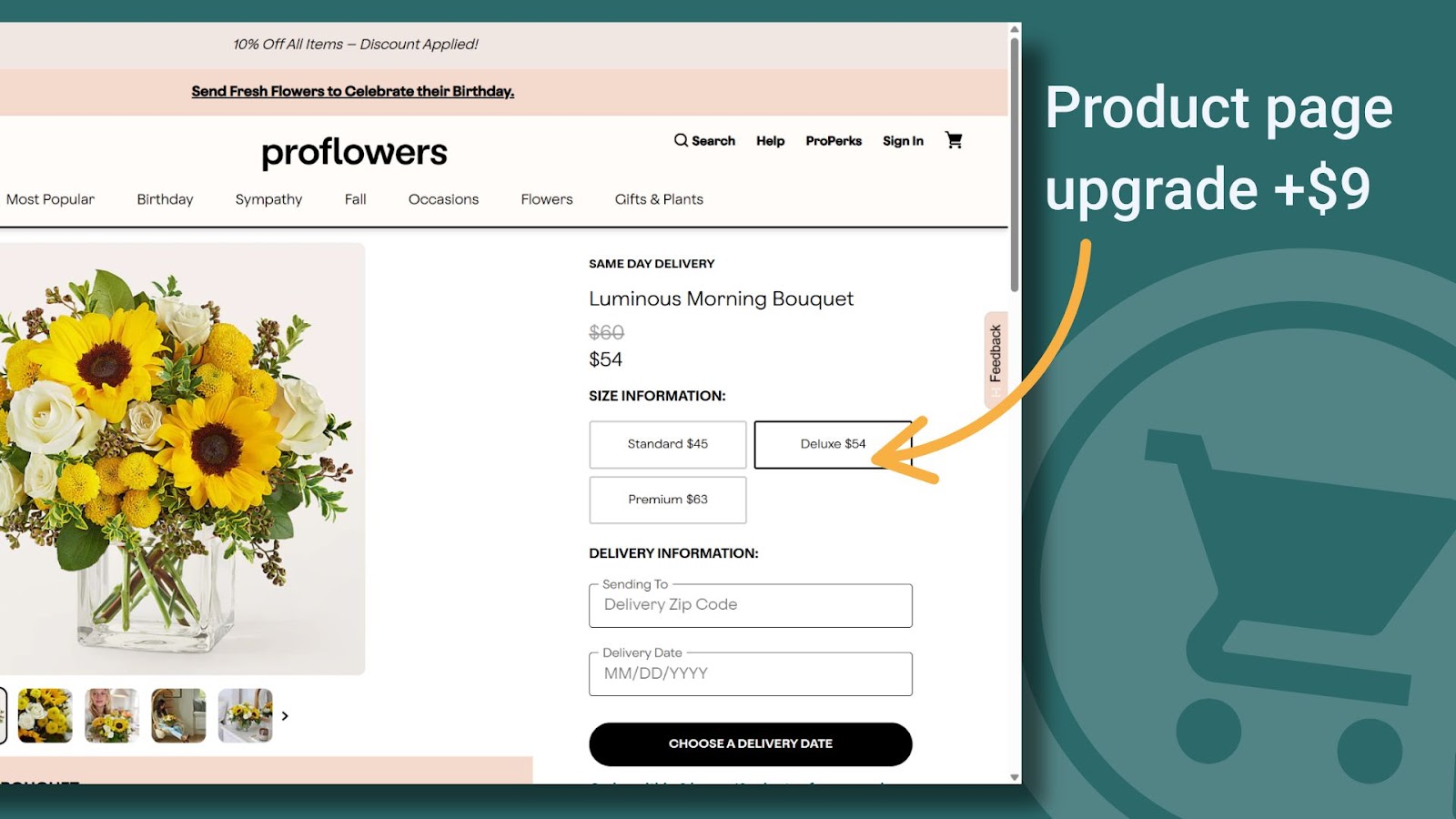
When choosing a bouquet, shoppers can easily upgrade from “Standard” to “Deluxe” or “Premium.” This is a classic upsell - offering a better version of the same product at a slightly higher price.
2. Same-Day Delivery Upsell (+$4.99)
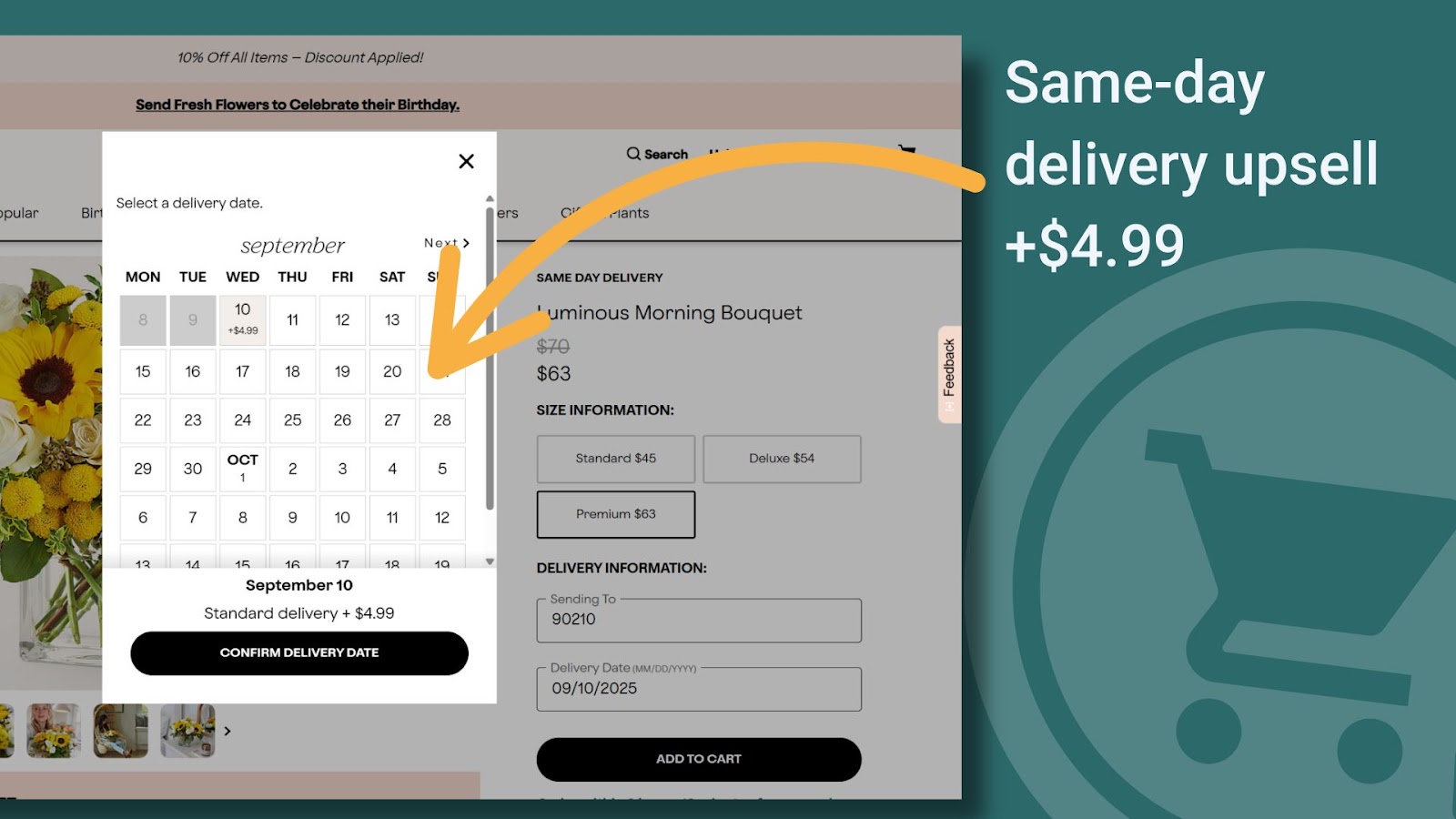
At checkout, ProFlowers offers expedited delivery for a small extra fee. This taps into urgency and convenience, both powerful psychological triggers for conversion.
3. Cart Cross-Sell Add-Ons (+$6.99 and up)
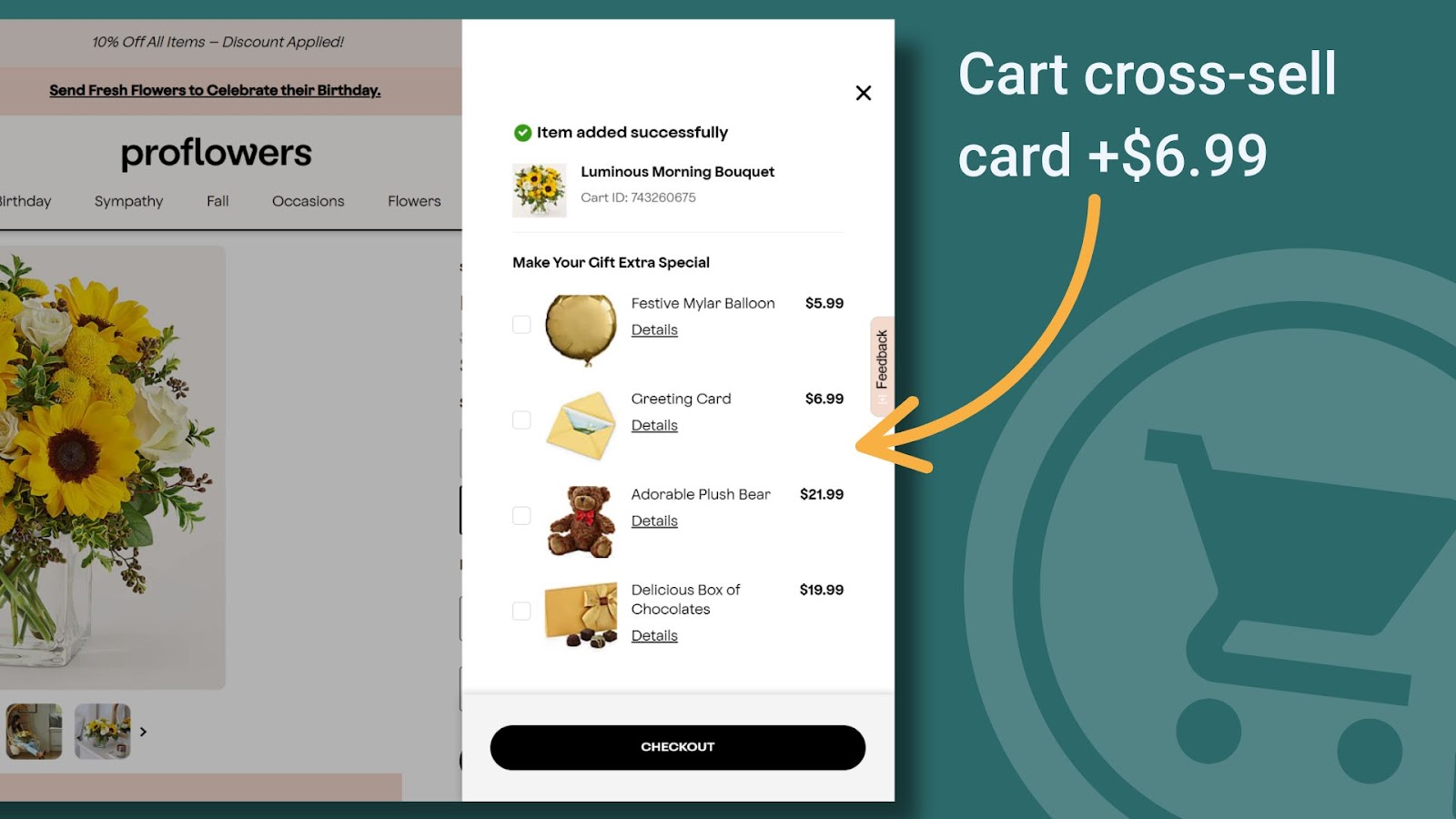
Once an item is added to cart, customers see complementary items like greeting cards, balloons, or chocolates. These small, relevant add-ons make the gift more complete while nudging the order value higher.
5 More eCommerce Upselling Examples
Now that you know the framework for building high-converting upsells, let’s see how leading brands put it into action. These examples show how simple tweaks at key touchpoints can lift AOV and create a smoother customer experience.
1. Made In Cookware’s Product Page Upsell
Made In Cookware uses a smart product page upsell on its Carbon Steel Half Griddle.

Right next to the main “Add to Cart” button, shoppers can tack on logical add-ons like a matching lid or a cleaning set.
This nails two of the core principles we covered above: pair logical add-ons and keep offers relevant.
The upsell is frictionless, with checkboxes that don’t interrupt the buying flow.
Takeaway: Product page upsells work best when they’re natural extensions of the main product and easy to add in a single click.
2. Made In’s “Customers Also Loved” + Recently Viewed
Sticking with Made In, notice how they also use a classic but powerful upsell tactic: recommended products and recently viewed items.
On product pages, shoppers see a “Customers Also Loved” carousel plus a list of items they recently checked out.
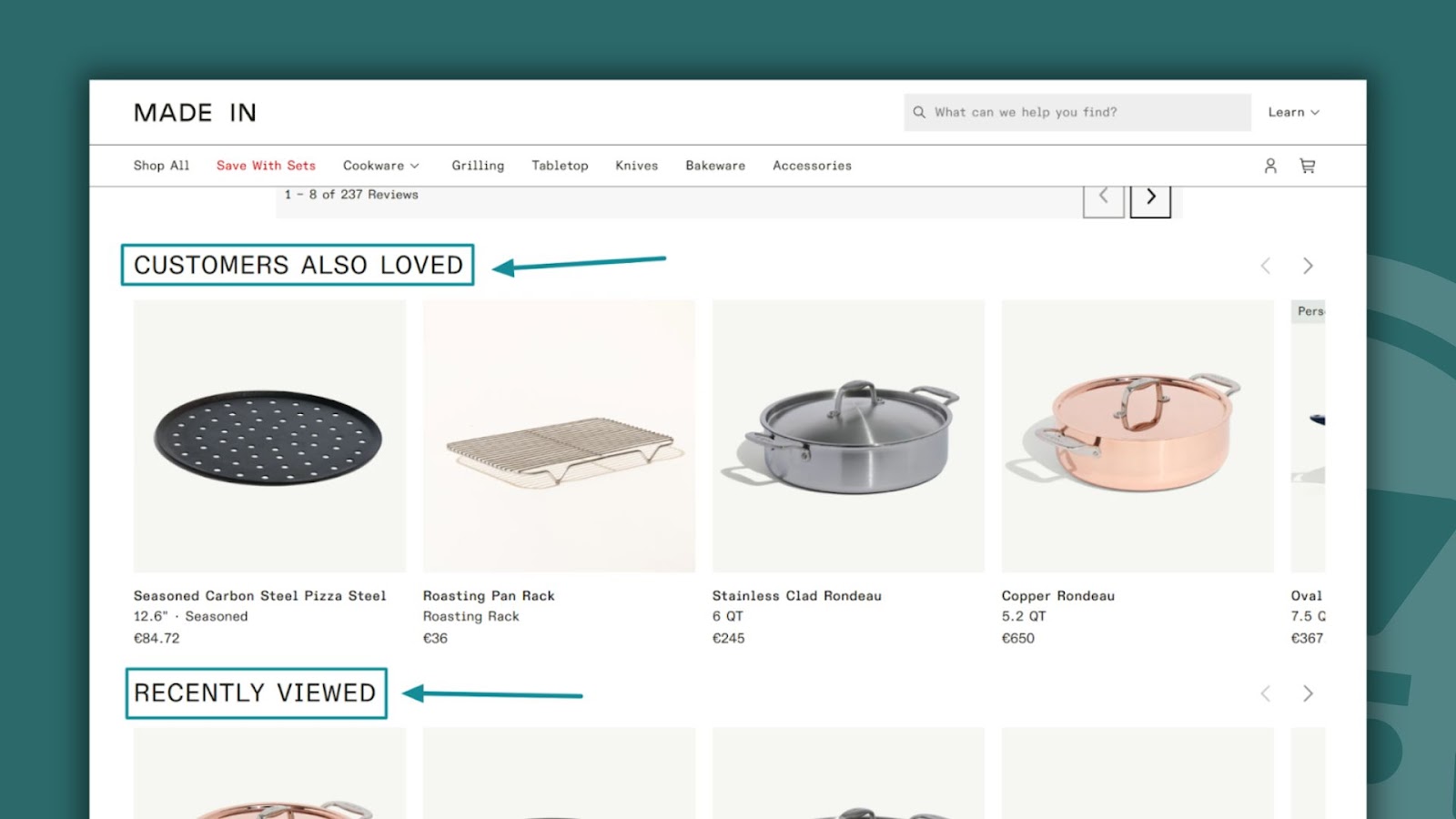
This strategy works on two levels. Recommendations act as social proof, highlighting products that other buyers chose, while “Recently Viewed” brings back interest in items a shopper almost purchased.
Together, they guide customers toward higher-value baskets with minimal effort.
Takeaway: Leverage recommendations and browsing history to keep shoppers engaged and nudge them toward bigger orders.
3. Beardbrand’s Cart Upsell
Beardbrand adds a clever upsell directly in the cart: order protection for $1.99.
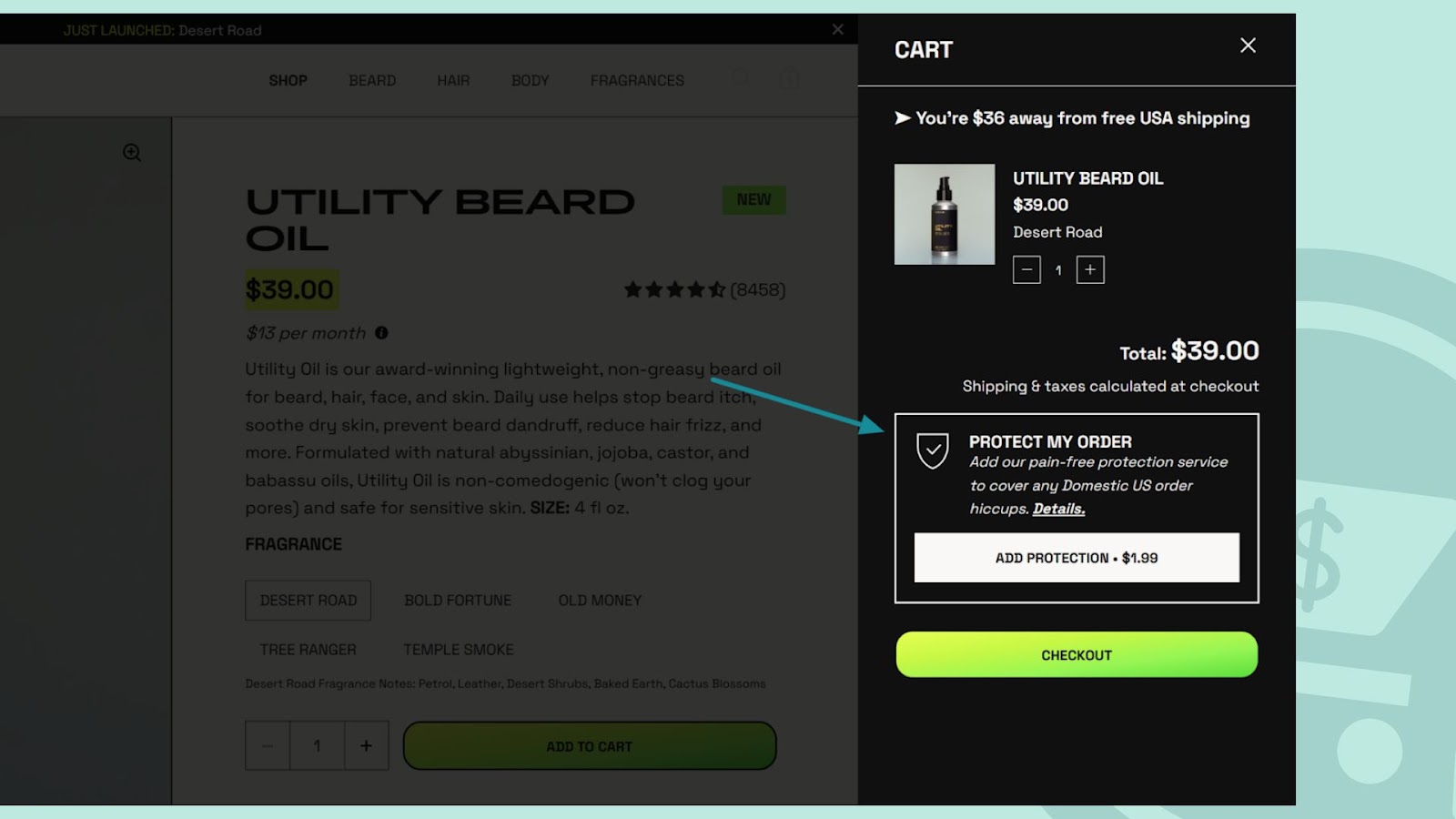
This is a low-friction, high-margin add-on that enhances peace of mind without distracting from the main purchase.
It also follows best practices we covered earlier - opt for relevant, simple offers and place them at key points like the cart.
Since shoppers are already about to check out, adding a small extra feels like a no-brainer.
Takeaway: Cart upsells work best when they’re low-cost, highly relevant, and framed as an easy “yes” for the customer.
📖Suggested Reading: ReConvert Recipe: Cross-Sell Digital Products at Checkout
4. One-Click Post-Purchase Upsells
One of the most effective strategies in eCommerce upselling is the one-click post-purchase offer.
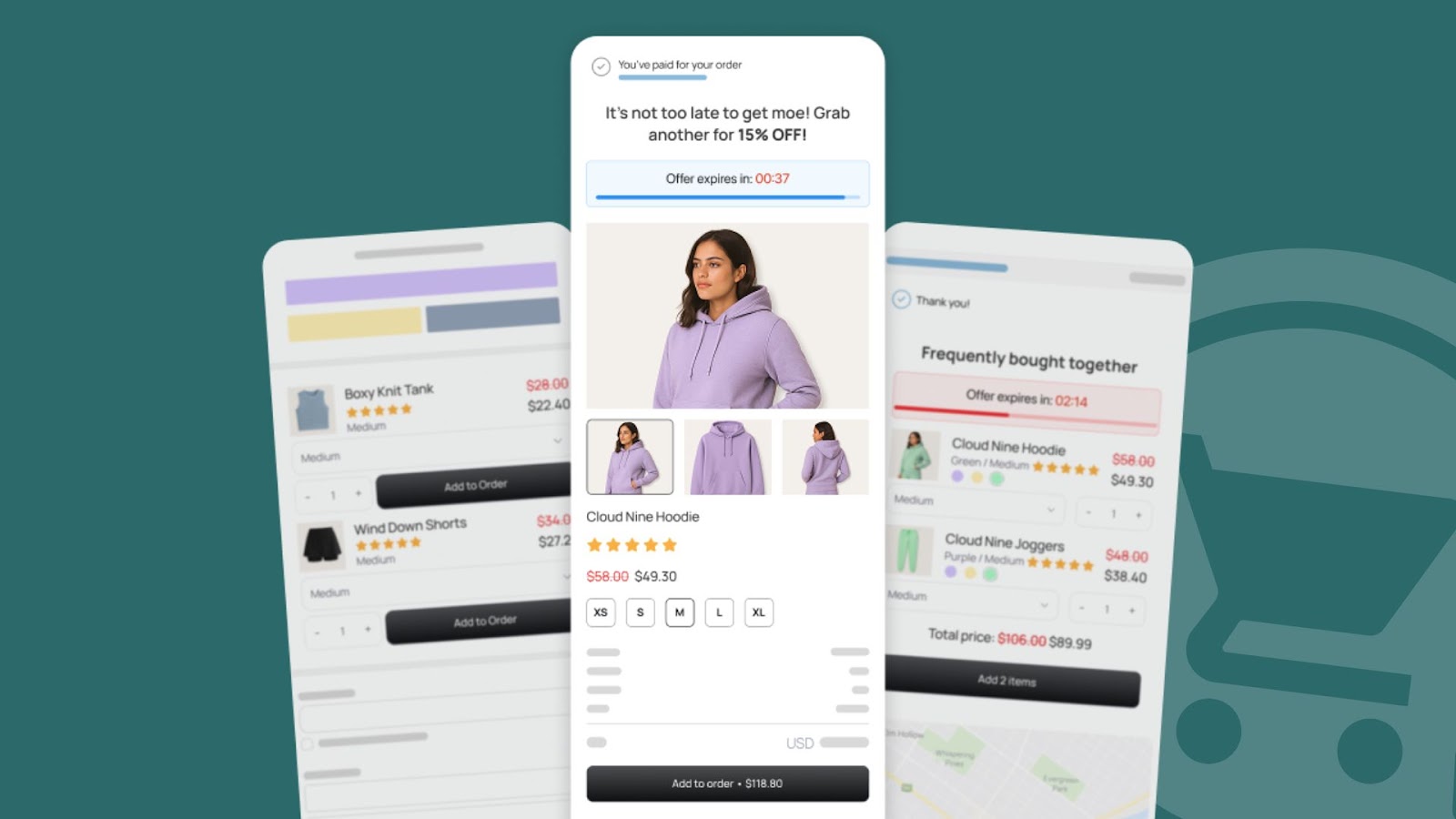
Instead of interrupting checkout, the upsell appears right after the order is confirmed.
With tools like ReConvert, customers can add a product to their order with a single click - no need to re-enter payment or shipping details.
On average, ReConvert users get a lift in AOV by 5–10% using these offers.
Why it works: Customers are in peak buying mode, and the frictionless experience makes saying “yes” easy.
Takeaway: Use one-click post-purchase upsells to boost order value without risking cart abandonment.
5. Laumiere’s Thank-You Page Upsell
The thank-you page is often overlooked, but it’s a prime spot for upsells.
Shoppers have just completed a purchase, trust is high, and they’re still engaged with your brand.
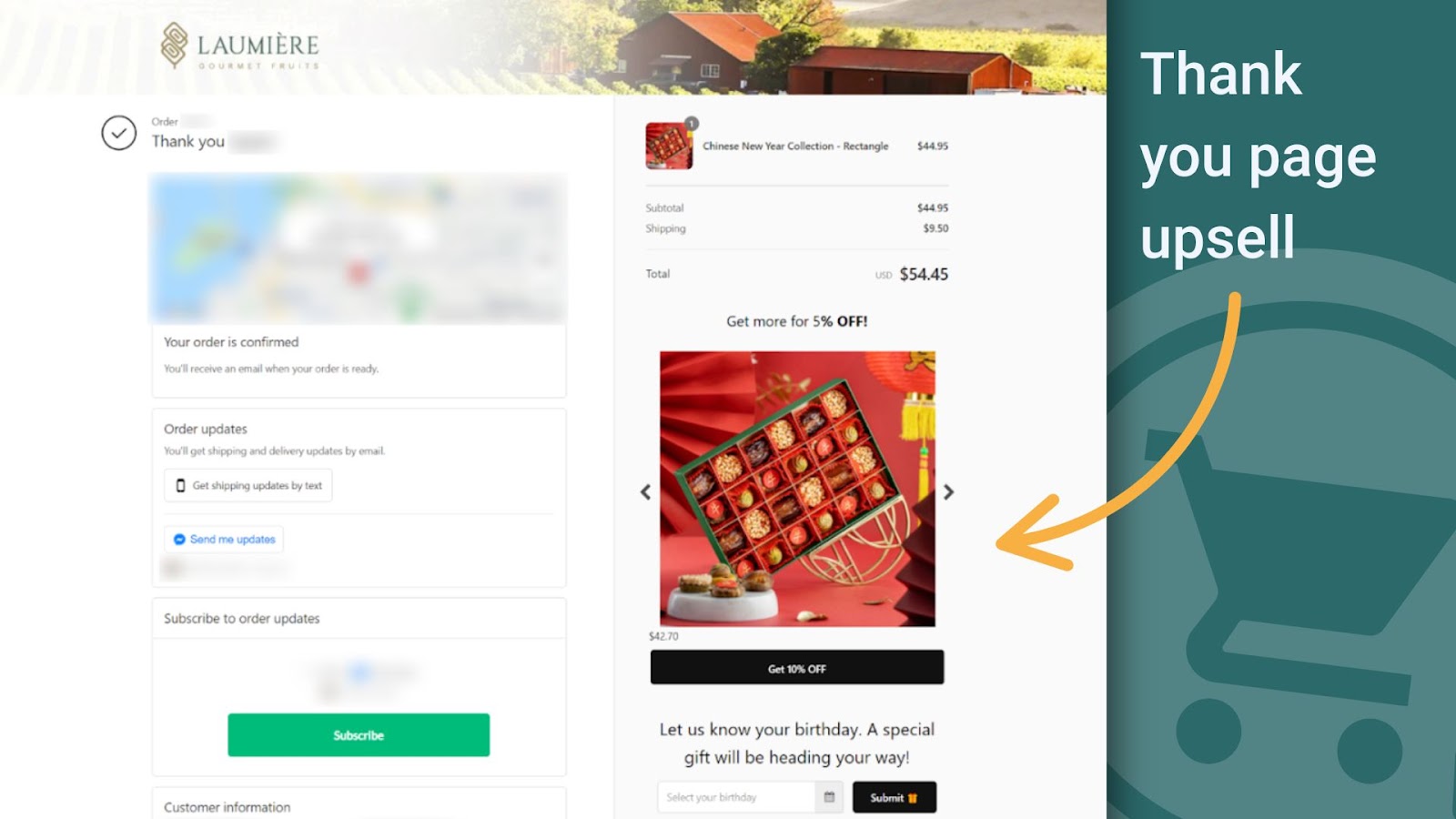
With ReConvert, merchants can turn this “dead-end” into a revenue driver by suggesting complementary items or time-limited offers right on the confirmation page.
Why it works: It leverages a moment of high attention when customers are most receptive.
Takeaway: Don’t waste your thank-you page. Use it to re-engage buyers with relevant upsells and keep the shopping journey going.
"You don’t need to be a conversion guru or pro designer – brand owners like me just need to plug it in. The scalability of ReConvert is incredible, whether you’re doing 10 orders per day or 10,000 orders per day, all you need to do is set it and forget it."
Varun Sharma, CMO
📖 Suggested reading: How Laumière Gourmet Fruits Boosted Revenue by 10% (In Under 3 Months) using ReConvert
How to Create High-Converting eCommerce Upsells, Step by Step
Now that you know what upsells are and have seen a few examples in action, let’s break down how to create ecommerce upsells that work.
A strong upsell program doesn’t happen by accident. It takes a structured process that balances customer experience with measurable business outcomes.
Here’s a practical playbook to follow.
1. Pick a Measurable Goal and Set Guardrails
Every upsell initiative needs a clear KPI. For most brands, that’s average order value (AOV) or incremental revenue per session. Decide what success looks like upfront - for example, a 12% lift in AOV without hurting conversion rates.
At the same time, set guardrails. Don’t overload the conversion funnel with popups or add-ons. A good rule of thumb is one offer before purchase and one after purchase, while keeping site speed intact (under 100ms impact on add-to-cart).
2. Mine Your Data for Attach Opportunities
The best upsells come from your own order data. Start by pulling your top sellers by revenue and margin, then look for products that frequently appear together in the same cart.
For example, batteries often attach to electronics, refills to consumables, or filters to appliances. This analysis can quickly produce a short “attach matrix” you can act on within days.
- Attach rate: Orders containing both A and B ÷ orders containing A.
- Upgrade rate: Orders with a premium variant ÷ orders of the base product.
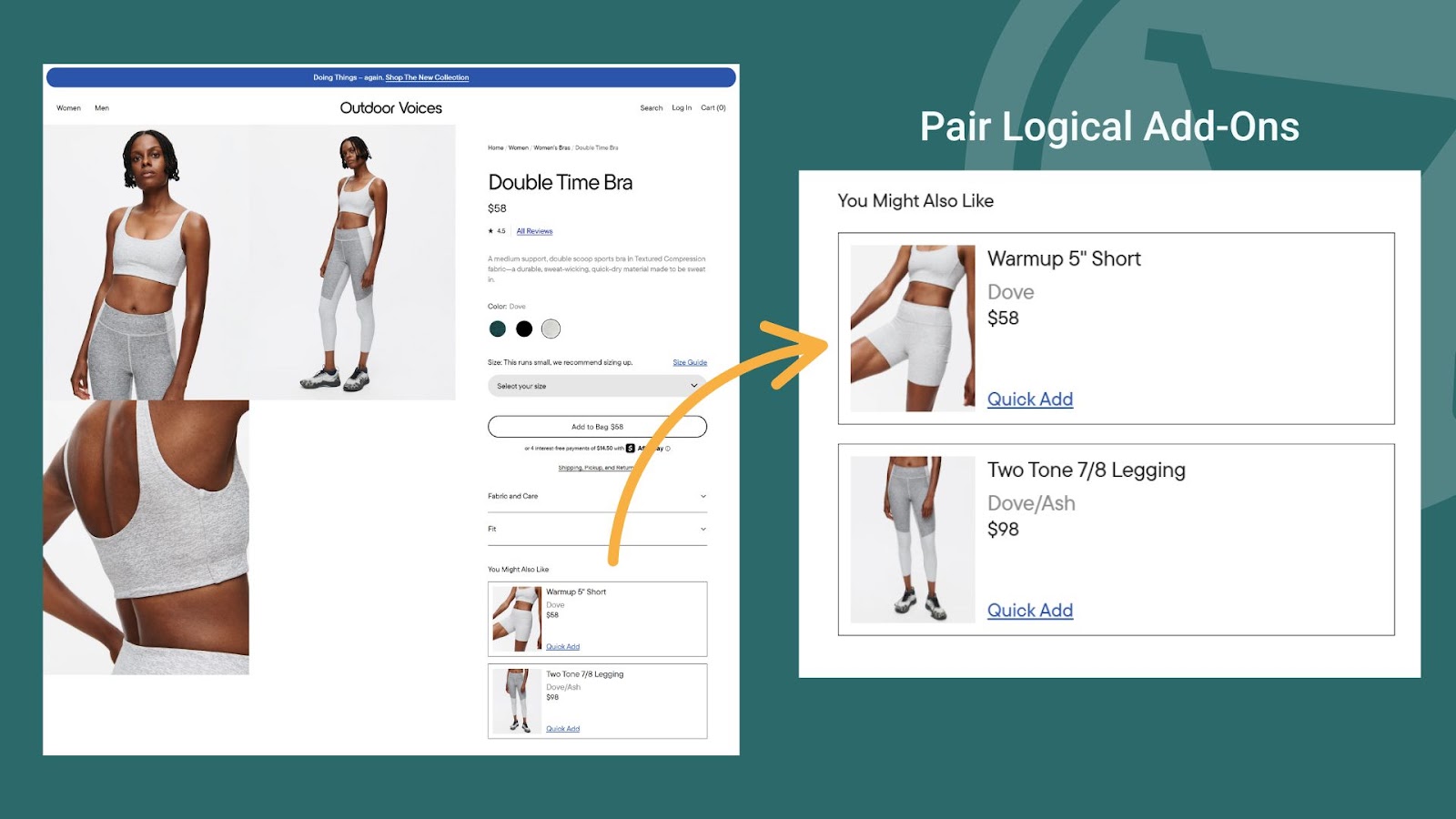
3. Map Offers to Journey Moments
Not every upsell belongs on the product page. Think about the full shopping journey and insert offers where intent is highest:
- Product page: Upgrade or bundle.
- Cart: Add-on with clear benefit.
- Checkout: Small, frictionless enhancement.
- Post-purchase: One-click upsell with urgency.
- Thank You Page/Confirmation page: Refills or accessories.
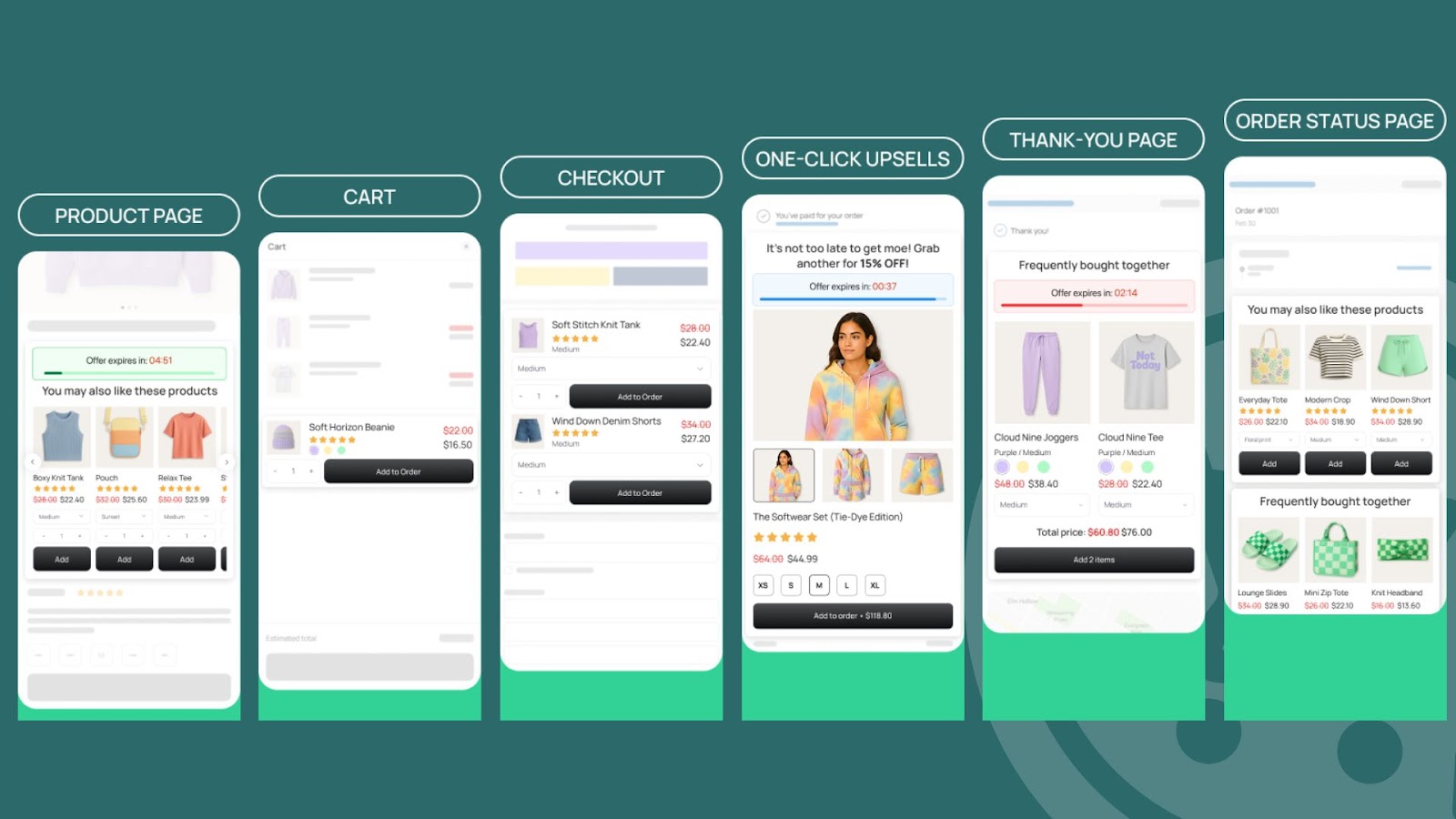
4. Build Simple, Rules-Based Targeting
Targeting doesn’t need to be complex. If a shopper adds Product A, suggest Add-on B. If they pick the basic variant, highlight the premium with clear benefits. Exclude low-margin SKUs or items prone to returns, and cap per-user frequency to avoid upsell fatigue.
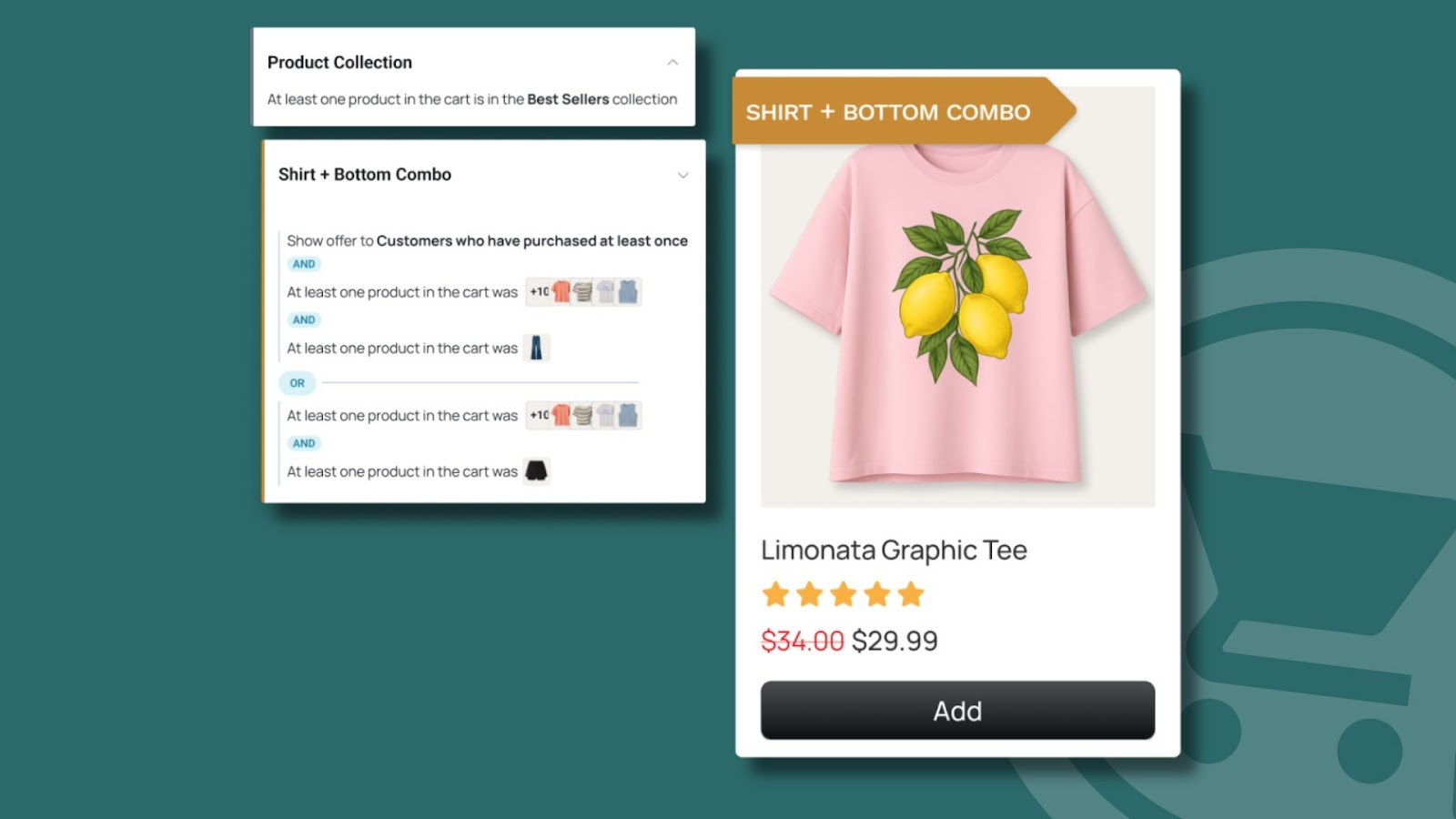
5. Craft the Offer: Copy First
Upsell copy does the heavy lifting. Keep it short, benefit-driven, and proof-backed.
- Headline: “Upgrade for 2x battery life.”
- Bullets: “Longer runtime, 24-month warranty, free replacement filter.”
- Price framing: “Only $12 more, save 18% vs buying later.”
- Social Proof: “1,248 customers chose this in the last 30 days.”
Some examples of good upsell copy:
- Product upsell: “Get the Pro Kit - includes X, Y, Z. Most buyers pick this.”
- Cart add-on: “Protect your purchase for 2 years. Covers drops and spills.”
- Post-purchase: “One-time thank you offer: add another for 30% off within 10 minutes.”
6. Design for Speed and Clarity
Design matters as much as the offer. Keep upsells compact with product images, 2–3 bullets, and clear “accept/decline” options. Avoid modal stacking that interrupts checkout, and always optimize for mobile first with thumb-friendly buttons. ReConvert automatically designs your upsell widgets in line with your brand.
7. Price and Incentivize With Discipline
Upsells perform best when they’re priced at 10–30% of the base product’s value. That range feels affordable yet meaningful. Bundles can also improve perceived value, but avoid heavy discounting that trains customers to wait for deals. Free shipping thresholds are another smart nudge (“You’re $9 away from free shipping - add X”).
8. Plan the Experiment Before You Ship
Upselling is a test-and-learn game. Write down your hypothesis: e.g., “A premium upgrade on the PDP will increase AOV by 8%.” Define your metrics (AOV, conversion rate, refund rate) and run a split test with enough exposure (say, 50% of traffic for 14 days). Always set a rollback condition if conversion drops.
Core formulas to know when planning your upsell experiement:
- Take rate: Accepted offers ÷ eligible sessions.
- Incremental revenue: (Offer revenue – cost) ÷ total sessions.
- Net AOV lift: (Test AOV – Control AOV) ÷ Control AOV.
9. QA Ruthlessly, Then Launch
Before going live, test across your top devices and browsers. Validate analytics events (view, click, accept, decline, purchase). Check that taxes, shipping, and inventory logic work for bundles. And don’t forget accessibility: make sure upsells can be accepted or declined via keyboard navigation.
10. Analyze, Iterate, Productize
After launch, cut results by device, channel, and customer type (new vs returning). Scale what works across similar products, retire weak offers quickly, and ship new variants.
A realistic cadence is 2-4 new a/b upsell tests per month, enough to build momentum without overwhelming your team. ReConvert has built in a/b testing to help you quickly identify your best-performing offers.

5 Psychological Tactics For Better eCommerce Upselling
Upsells work not just because they’re convenient, but because they tap into core human decision-making biases. Here are the key psychological triggers that make eCommerce upselling so effective.
Anchoring
When customers see a higher-priced product first, it “anchors” their perception of value. That makes the upsell look like a smart upgrade. Example: showing a $299 premium blender makes the $199 version feel affordable, and upgrading from $199 to $229 feels like a small step.
Decoy Effect
The “middle option” trick. By placing a less attractive alternative next to your upsell, you make the upgrade look like the best deal. Think of movie theater popcorn sizes, the medium exists mainly to push people toward the large.
Urgency & Scarcity
Time-limited or stock-limited offers drive action. A one-click post-purchase upsell that says “Add refills for 20% off, offer expires in 10 minutes” uses urgency to get quick buy-in without second-guessing.
Social Proof
People trust what others are doing. Adding “Most customers add this” or “500+ bought this upgrade in the last month” reduces hesitation and makes the upsell feel normal. Amazon’s “Frequently Bought Together” is a masterclass in this principle.
Loss Aversion
Shoppers hate losing out more than they love gaining. That’s why offers like order protection (“Protect your order for $2.99”) work so well, they frame the upsell as preventing a loss rather than creating an extra cost.
Power Your eCommerce Upsells With ReConvert
eCommerce upselling isn’t just about squeezing more dollars out of each transaction. Done right, it improves the customer experience, increases loyalty, and strengthens your bottom line, all without spending more on acquisition.
From product page upgrades to post-purchase one-click offers, the brands that win are those that keep offers relevant, timely, and easy to accept.
All the strategies we’ve covered, from product page add-ons to one-click post-purchase upsells, are simple in theory but complex to implement manually. That’s where ReConvert comes in.
ReConvert makes it easy to:
- Launch one-click post-purchase upsells that tap into urgency and loss aversion without adding friction.
- Personalize product recommendations using data-driven logic to keep upsells relevant.
- Optimize thank-you pages with social proof, time-sensitive offers, and add-ons that extend the customer journey.
- A/B test with confidence so you can validate what works and scale winners across your store.
In short, ReConvert gives you the tools to put these psychological principles into action, turning every order into an opportunity to increase AOV and improve customer experience.
👉 Ready to start your free trial of ReConvert today and launch your first high-converting upsell in minutes? Try ReConvert for free today!
FAQs About eCommerce Upselling
What is upselling in eCommerce?
Upselling in eCommerce is encouraging customers to buy a higher-value version of a product or add complementary items, boosting average order value without extra acquisition costs.
What is the 25% rule of thumb for cross-selling?
The 25% rule suggests cross-sells should not exceed about a quarter of the original product’s cost, keeping add-ons affordable and easy to accept.
What are the 4 stages of upselling?
The four stages are: identify opportunities, present relevant offers, frame the value, and test/optimize performance.
What are good examples of upselling?
Examples include product page upgrades (premium versions), cart add-ons (warranties, accessories), post-purchase one-click offers, and thank-you page recommendations.
Free eCommerce Upsell Checklist
